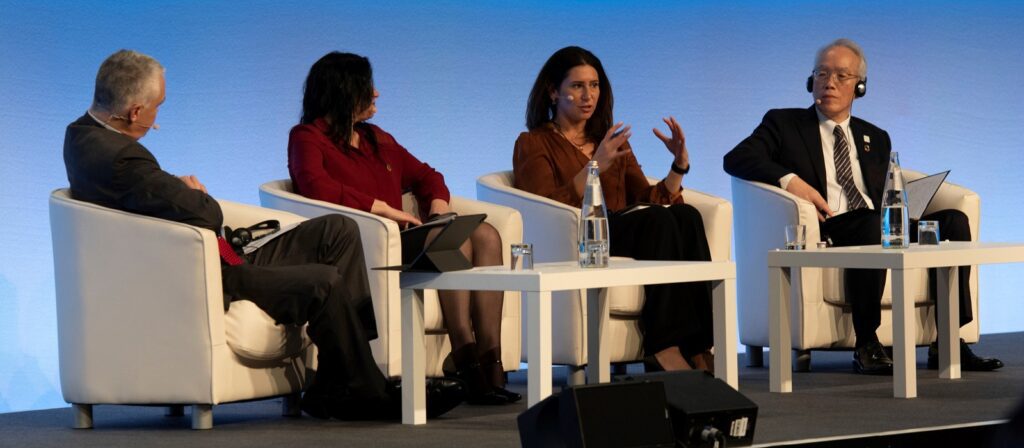In the dynamic world of investment, the concept of ‘greening’ portfolios is gaining significant traction. Aviva Investors recently shed light on its approach to this critical issue, offering invaluable insights for investors keen on aligning their portfolios with sustainable practices.
Greening a portfolio often begins with adopting a policy approach, which typically includes screening policies and baseline exclusions. This process integrates ESG considerations into investment decision-making. However, the real challenge lies in applying these principles to the mainstream segments of a portfolio.
For large investors, sustainable thematic investments like natural capital or impact investing constitute only a fraction of their portfolio. The pivotal task is transforming the mainstream portfolio, transitioning from existing investments to more sustainable options. This is a complex and dynamic endeavour, involving considerations of risk, return, and sustainable outcomes, which vary from client to client.
Aviva Investors emphasises an active investment approach. Contrary to limiting its investment universe, it focuses on engaging and enabling transitions towards better outcomes. This philosophy is built on the understanding that there is no “one-size-fits-all” solution in sustainable investing.
The case study presented by Aviva Investors involves a large asset owner with long-dated pension funds, aiming to invest in emerging market bonds. The challenge was to align these investments with the client’s net-zero target while maintaining the desired credit and spread profiles.
Aviva Investors’ approach differentiates between corporate and sovereign investments. The corporate strategy is more quantitative, employing bespoke screening tools to assess net-zero alignment and portfolio construction. For sovereign investments, a qualitative approach is necessary due to less precise data and constantly changing geopolitical landscapes.
Aviva Investors’ stewardship approach is particularly effective at the sovereign level, where engagement can lead to significant impacts. This involves a comprehensive strategy encompassing various levels of stewardship and resource allocation, especially in areas with the highest potential for impact.
The key takeaway from Aviva Investors’ experience is the necessity of agility in green investment strategies. Its tools and frameworks are designed to adapt to market changes, balancing quantitative and qualitative assessments. The focus remains on the impact, particularly in terms of decarbonisation goals, ensuring scalability to cater to multi-billion pound portfolios.
Aviva Investors acknowledges the evolving nature of the market, constantly updating its tools and strategies with better data and newer techniques. Importantly, its approach remains client-centric, adapting to the unique risk-return-outcome preferences of each investor.
The journey of greening investment portfolios is intricate and multifaceted. Aviva Investors’ method demonstrates the importance of a dynamic, client-focused approach, blending active investment strategies with a deep understanding of the unique challenges in various market segments. Its experience serves as a valuable guide for investors and firms aiming to align their financial goals with environmental sustainability.
With billions in Swedish crowns under asset management, Folksam (Sweden) demonstrates financial robustness. This substantial fund is managed across a diverse portfolio, reflecting Folksam’s conscientious approach to investment and risk management.
Folksam is not a newcomer to the challenges of climate change and its proactive stance is evident in its long-standing commitment to responsible investments, including early adoption of exclusion criteria in the 2000s and being a founding member of the United Nations (UN) Principles for Responsible Investment (PRI) in 2006.
In 2019, Folksam was instrumental in establishing the UN-convened Net-Zero Asset Owner Alliance in New York, a collective of asset owners committed to net-zero portfolios by 2050. This initiative aligns with the Paris Agreement’s 1.5-degree scenario, underscoring Folksam’s dedication to real-world impact over mere portfolio adjustments.
Folksam has undergone a strategic shift in investment philosophy, from a primarily active management approach with a large in-house team, it has transitioned to a leaner operation focusing on passive portfolio management and sustainable investment criteria. This shift also involved a rigorous manager selection process and a concerted effort to integrate sustainability into every investment decision.
Folksam’s equity portfolio construction exemplifies their sustainability-first approach. They apply stringent sustainability filters, removing the lowest-scoring companies. This results in a portfolio that not only outperforms the market in ESG metrics but also demonstrates a significantly lower carbon footprint.
The insurers engagement strategy is innovative, exemplified by their ‘engagement ladder’. This approach categorises companies based on their climate action progress, from basic emissions reporting to science-based targets approved by initiatives like Science Based Targets initiative (SBTi). Folksam’s influence extends beyond the financial sector, engaging with industries like steel and banking to encourage fossil-free strategies and responsible lending policies.
The Investment Advisory Board (IAB) recently convened to discuss strategies for mobilising private capital into resilience efforts against climate change. This meeting highlighted the critical need for investment in resilience alongside ongoing efforts in climate change mitigation.
Traditionally, climate change investments have heavily focused on mitigation, such as renewable energy and avoiding fossil fuels. However, resilience—the capacity to adapt to climate-related disruptions—has not received equivalent attention or funding. Estimates suggest that approximately a trillion dollars will be required for resilience investments. Currently, we are significantly short of this target, with only a small percentage of the required investment achieved.
Unlike climate change mitigation, which offers immediate income streams for financing, resilience does not have a similar financial profile. This lack of direct income streams presents a unique challenge in attracting private capital towards resilience efforts. Nonetheless, the benefits of investing in resilience—such as saving lives, economies, and ecosystems—are enormous and crucial.
The IAB meeting delved into creating innovative financial products that could potentially increase capital flow into resilience efforts. The excitement around developing such products stems from their potential to transform the investment landscape in this sector.
In a broader context, the conversation also touched upon the establishment of green investment portfolios. The key considerations for setting up such portfolios include defining one’s version of ‘green’ and complying with various sustainability frameworks like the Sustainable Finance Disclosures Regulation (SFDR) and the United Nations (UN) Sustainable Development Goals (SDGs). The balance between sustainability, risk, and returns is critical, especially when considering the diverse expectations of global investors.
Government policies and public support play a significant role in shaping green investment strategies. Technological advancements also provide lucrative opportunities for venture capital and later-stage investments, particularly in new technologies with high capital expenditure requirements.
A significant part of the discussion focused on engaging clients in responsible and sustainable investment practices. Transparency, sharing of tools and knowledge, and continuous adaptation to emerging trends are vital for success in this area. Collaborative efforts with clients can enhance the sophistication of investment strategies and lead to more impactful outcomes.
Session speakers:
- Daniel McHugh, CIO, Aviva Investors (UK)
- Johannes Jögi and Emilie Westholm, Folksam (Sweden)
- Emma Haigh, Sustainability Investor, UNDRR IAB







